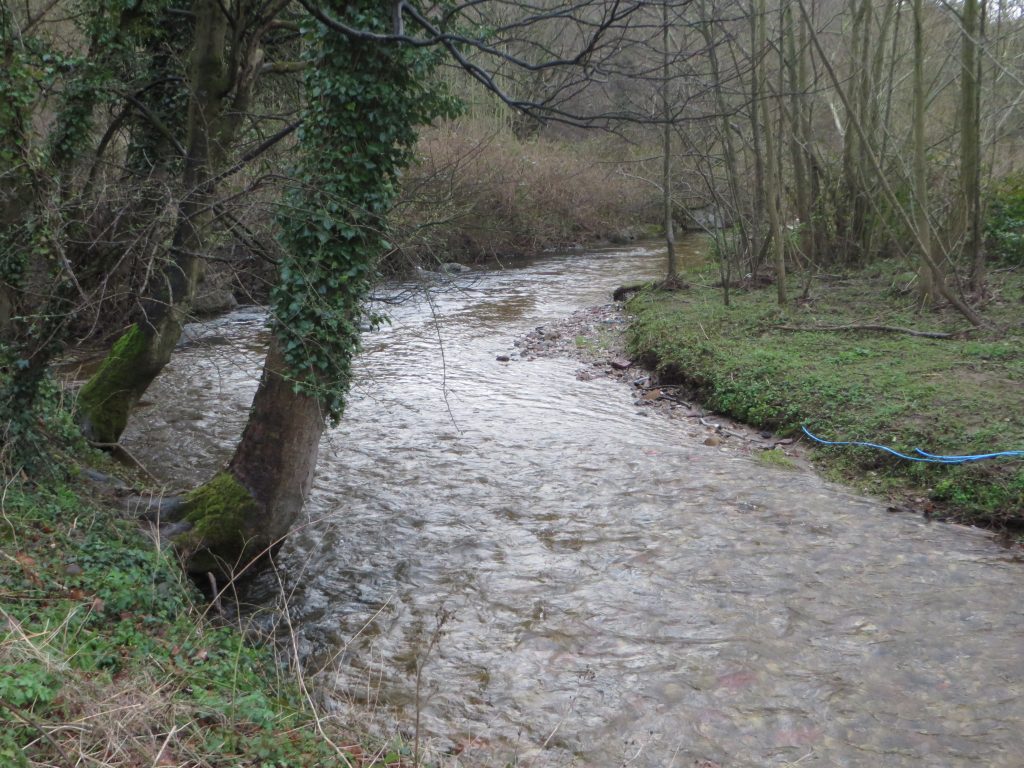Watching the water flow past a bend in the river. The same place, the same time of day, every week for 52 weeks. A year in the life.
Week 2
The rain is steady and insistent. Underfoot the ground is like soggy breakfast cereal. The river flows swiftly, heavy with silt washed down from Minera Mountain. An abandoned blue hose, washed down from upstream, snakes along the opposite bank. At one time there were seventeen watermills along this stretch of the river, generating power to grind corn and serve the paper and cloth-making industries. These were cast aside in the nineteenth century with the rise of steam-power, but the mills have left their mark on the landscape, both physically and in terms of place names: King’s Mills, Nant Mill and Felin Puleston (Puleston Mill).
If Newton thought, said Austerlitz, pointing through the window and down to the curve of the water around the Isle of Dogs glistening in the last of the daylight, if Newton really thought that time was a river like the Thames, then where is its source and into what sea does it finally flow? Every river, as we know, must have banks on both sides, so where, seen in those terms, where are the banks of time? What would be this river’s qualities, qualities perhaps corresponding to those of water, which is fluid, rather heavy, and translucent? In what way do objects immersed in time differ from those left untouched by it? Why do we show the hours of light and darkness in the same circle? Why does time stand eternally still and motionless in one place, and rush headlong by in another? Could we not claim, said Austerlitz, that time itself has been nonconcurrent over the centuries and the millennia? It is not so long ago, after all, that it began spreading out over everything. And is not human life in many parts of the earth governed to this day less by time than by the weather, and thus by an unquantifiable dimension which disregards linear regularity, does not progress constantly forward but moves in eddies, is marked by episodes of congestion and irruption, recurs in ever-changing form, and evolves in no one knows what direction?
W G Sebald – Austerlitz

